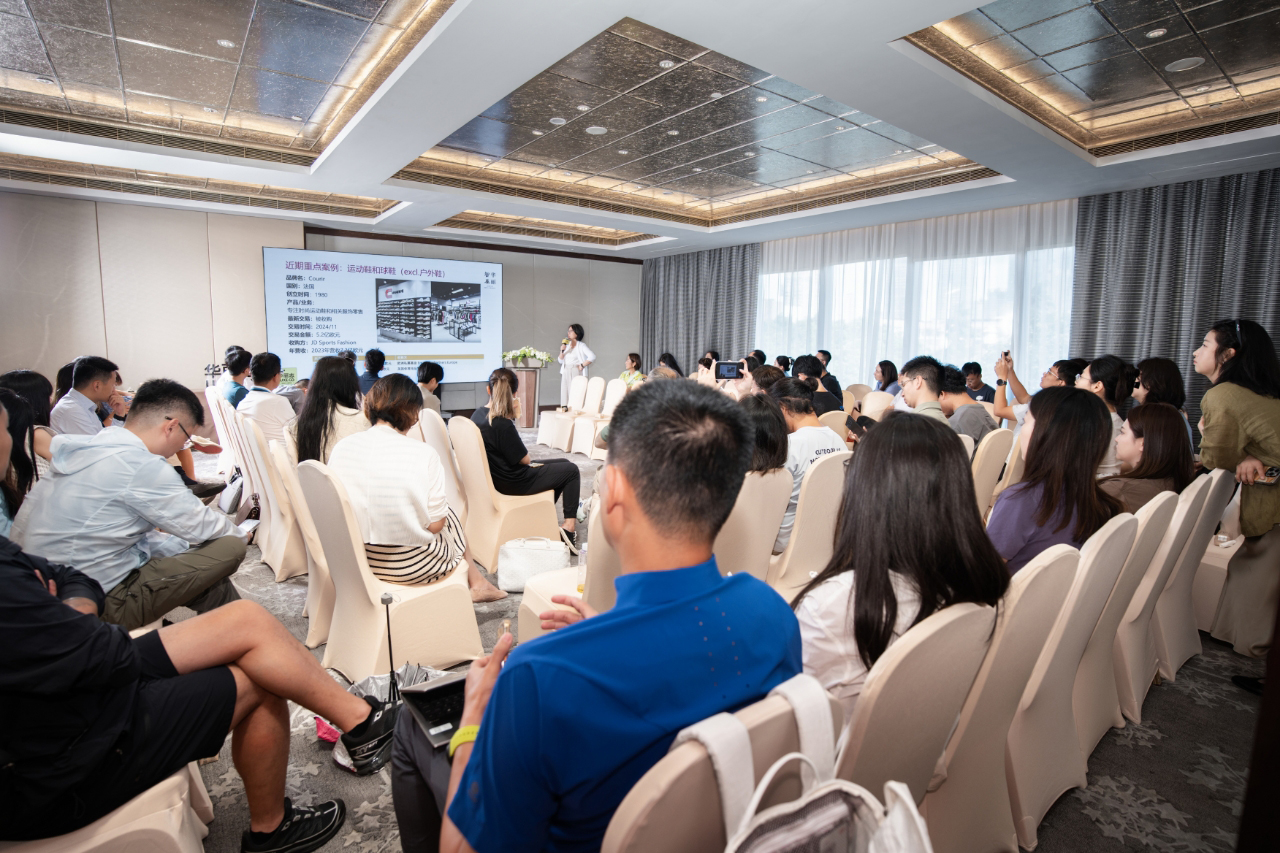In March this year, Luxe.CO officially established its “Silk Culture Division” with the aim of interpreting and promoting the profound heritage of Chinese silk culture and industry from a fresh perspective through a series of high-quality original content. The initiative has received an enthusiastic response from both within and beyond the industry.
On May 22, the first event of the “Luxe.CO Silk Innovation Salon” series was successfully held at The Temple House in Chengdu Taikoo Li. Visionaries from across the silk supply chain, fashion brands, commercial real estate, and fashion media gathered to explore opportunities for innovation and the development potential of the silk industry.

Luxe.CO Founder and CEO, Ms. Alicia YU (pictured left below), opened the event by presenting the latest report from Luxe.CO Intelligence, titled Luxe.CO Silk Industry Insights. Spanning nearly 60 pages and covering 30 Chinese and international silk enterprises and brands, the report showcases a systematic study by Luxe.CO Intelligence on both upstream and downstream segments of the silk industry.
The report is divided into six sections: data on China’s upstream raw silk industry and supply chain innovation case studies; profiles of China’s integrated silk enterprises; an overview of Chinese silk brands; silk product innovations by Chinese womenswear brands; high-end silk supply chain enterprises in Italy; and case studies of silk products and marketing strategies by international luxury brands.
YU highlighted that since the implementation of China’s “Move Mulberry Cultivation Westward” policy in 2006, the country’s main sericulture regions have shifted significantly from the eastern to western regions. Guangxi has ranked first in cocoon production nationwide for 19 consecutive years. In terms of raw silk quality, Sichuan leads the way—over 70% of its raw silk output in 2022 was graded 5A and above. In 2024, Sichuan’s raw silk exports surged by 89.7% to RMB 310 million [approx. USD 42.8 million], the highest export value in China, with “high-quality” raw silk as the main export product.
ZHAO Xiaoyue (pictured right below), Head of the Silk Culture Division at Luxe.CO, presented a vivid “Sichuan Silk Culture Map” to the guests. Tracing the upper reaches of the Yangtze River through the Jinsha, Minjiang, and Jialing River basins, the map pinpointed key sericulture areas such as the Liangshan Yi Autonomous Prefecture, Yibin, Nanchong, and Mianyang. These mountain ranges and rivers that nurtured ancient agricultural and sericulture civilizations, as well as numerous cultural landmarks and historical sites scattered along the two-thousand-year-old “Southern Silk Road,” bear witness to Sichuan’s rich silk culture and deep-rooted industrial heritage.
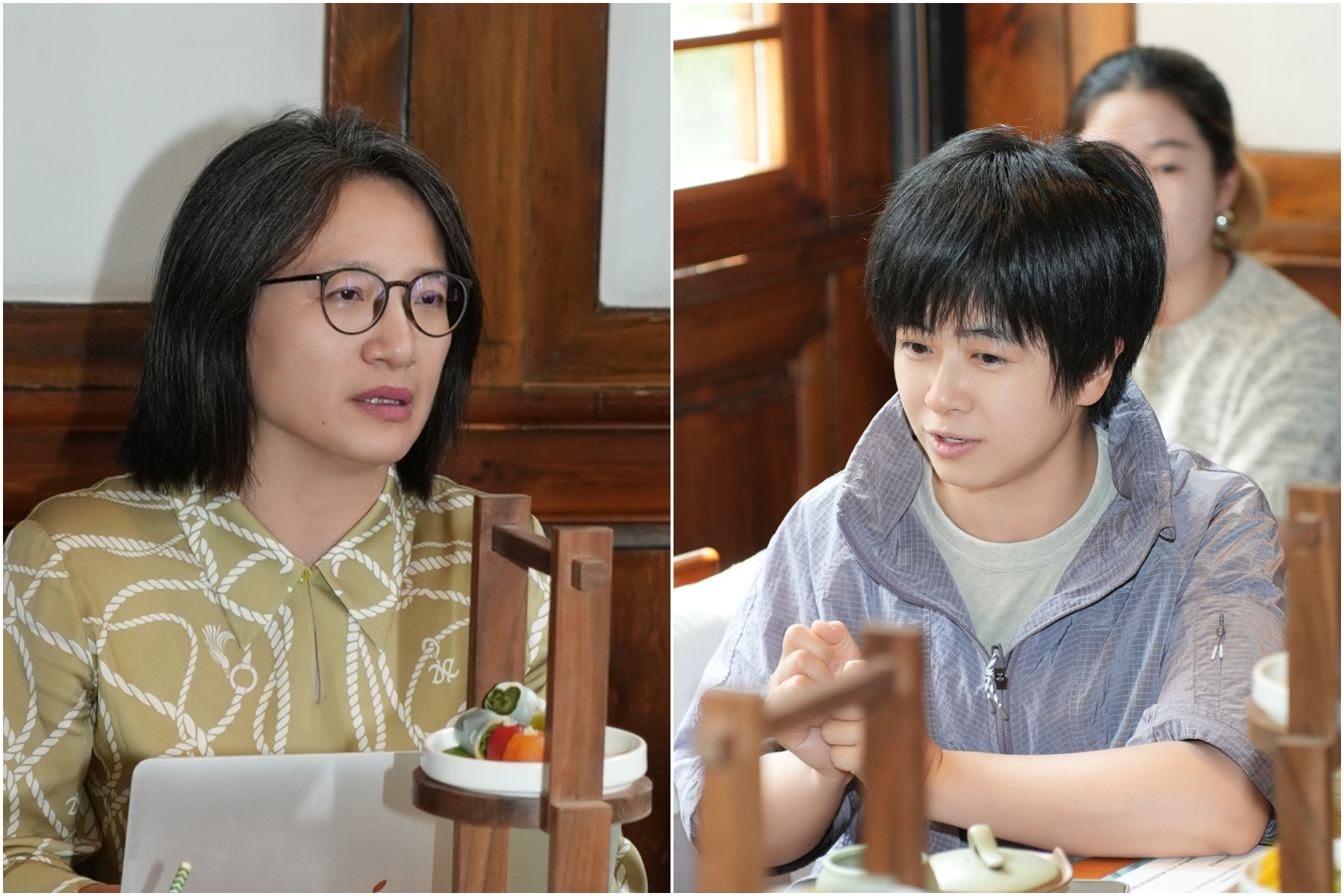
While enjoying an exquisite afternoon tea provided by Mi Xun Teahouse at The Temple House, guests engaged in animated discussions. Local industry veterans from Sichuan introduced the core advantages of the province’s sericulture sector, sharing stories behind top raw silk producing regions such as Ningnan in Liangshan. Representatives from fabric enterprises in Jiangsu and Zhejiang expressed a pressing demand to transition from synthetic fabrics to more premium silk materials.
During the roundtable session, Ms. LENG Yuxuan (pictured left below), Producer of Cosmo Bride and Chief Advisor to Sanya International Bridal Fashion Week, along with Ms. HUANG Tao (pictured right below), Deputy General Manager of Poly Times Chengdu under Poly Commerce & Tourism, shared their valuable insights on the topic “Consumer Potential and Innovation Prospects of Chinese Silk.”
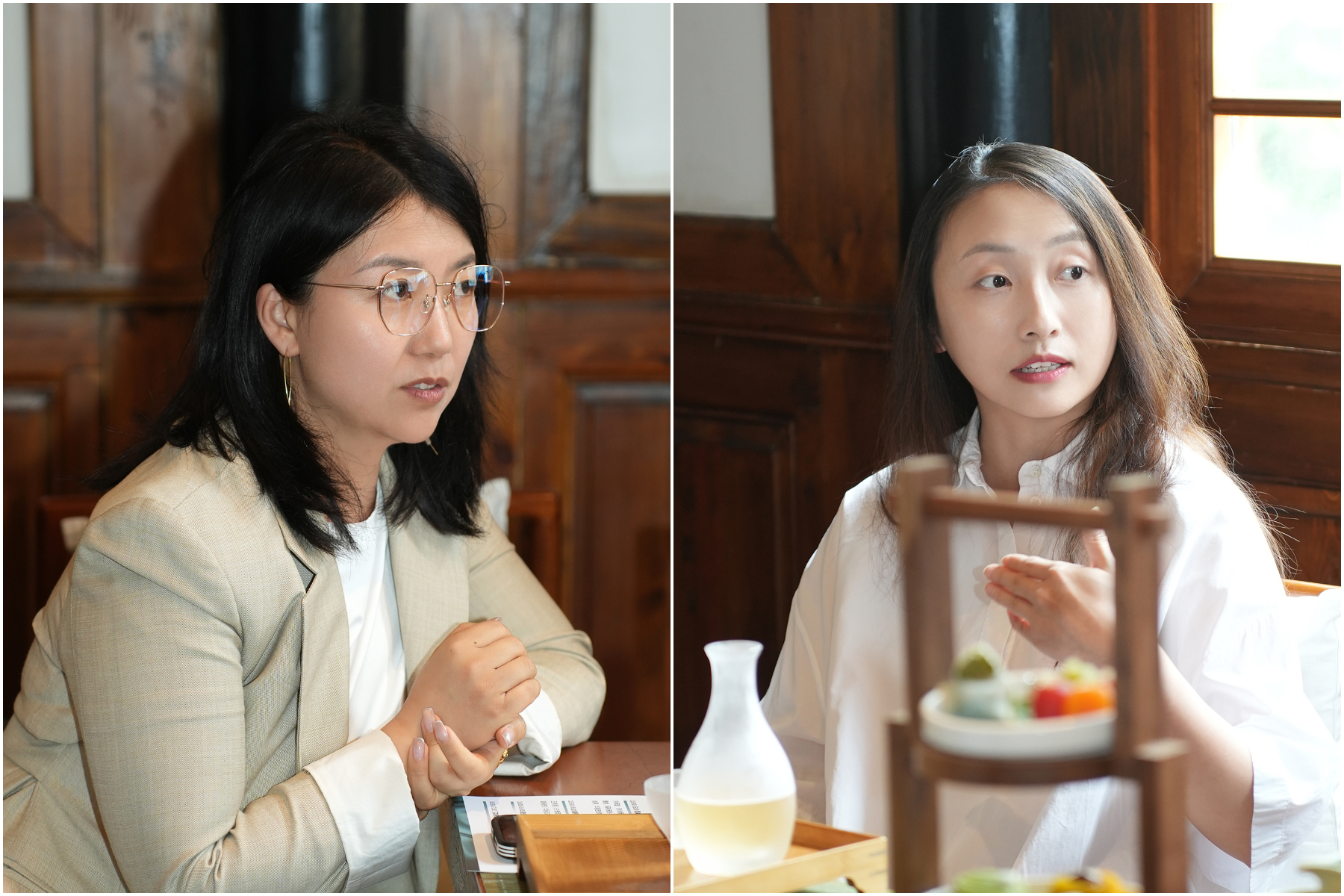
LENG remarked, “I grew up in Sichuan, where nearly everyone raised silkworms during childhood. Silk is woven into the collective memory of daily life here and holds immense aesthetic value. There’s a large overlap between Chinese mid-to-high-end silk consumers and international luxury consumers. Chinese silk has enormous potential for imagination, from branding to product development.”
HUANG shared her thoughts on the development of the silk category: “Silk is one of the most iconic luxury fabrics of China, and it still holds tremendous growth potential. For example, with the growing popularity of outdoor lifestyles, people are increasingly seeking clothing that is comfortable and easy to care for—could this offer a new direction for the application of silk fabrics?”

During the discussion session, WANG Xiuli (pictured above), Business Manager of Blue Embroidery Textile at Chinese heritage fashion brand EP Yaying, shared the brand’s innovative practices in the silk sector. In recent years, EP Yaying has been gradually incorporating intangible cultural heritage techniques such as Song brocade and flower gauze weaving into everyday womenswear, with a particular focus on achieving a subtle balance between traditional elements and contemporary aesthetics. By organically blending traditional craftsmanship, current womenswear trends, and signature prints from the brand’s archive, EP Yaying strives to breathe new life into ancient techniques, offering women better choices for daily wear.
To ensure quality control from the source, EP Yaying has conducted in-depth research into the upstream raw silk supply chain and, in 2021, jointly established the “EP Yaying Group (Ningnan County) Sericulture Base” with its suppliers, laying a solid foundation for future design expansion.

WANG revealed that EP Yaying has made continuous technological breakthroughs in aspects such as wrinkle resistance and thermal insulation, while also pushing the boundaries of silk apparel applications—from office wear to outdoor leisure. The brand has already built out a mature product line across these scenarios. Notably, a pair of women’s shoes released this year, crafted from silk satin jacquard fabric (pictured above), has become a bestseller in its category.

After the salon, Luxe.CO and the guests walked to EP Yaying’s flagship store at Parkson on Chunxi Road in Chengdu (pictured above) for an on-site exploration of the brand’s latest innovations in its silk product line. This season, EP Yaying collaborated with ZOU Yingzi, a nationally recognized inheritor of Suzhou embroidery (a National Intangible Cultural Heritage), to incorporate distinctive dyeing, embroidery, and hand-beading techniques into modern womenswear (pictured below left).
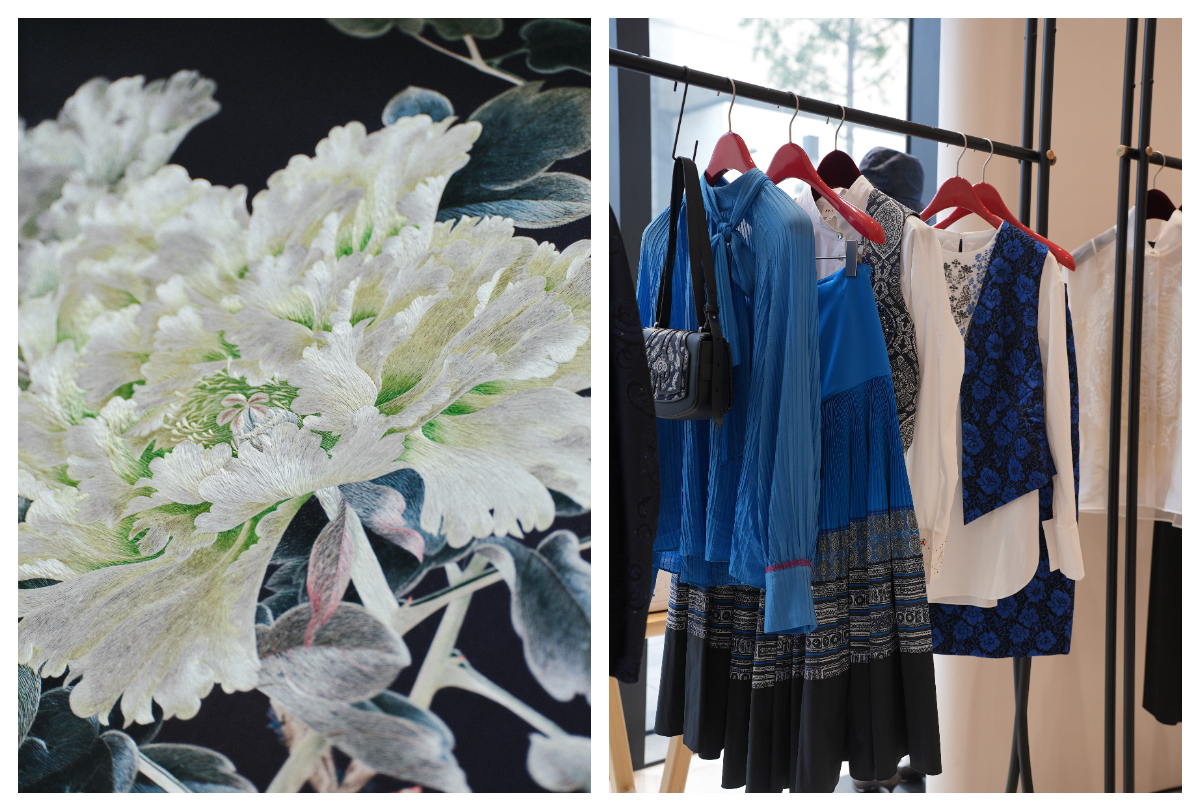
Salon Venue: Mi Xun Teahouse at The Temple House, Chengdu
The Temple House is a member of The House Collective by Swire Hotels. Located in the bustling Taikoo Li district of Jinjiang, Chengdu, it sits at the heart of the city, adjacent to the thousand-year-old Daci Temple and the Chunxi Road commercial area. Seamlessly blending historical heritage with contemporary style, it stands as one of Chengdu’s most iconic luxury hotels.
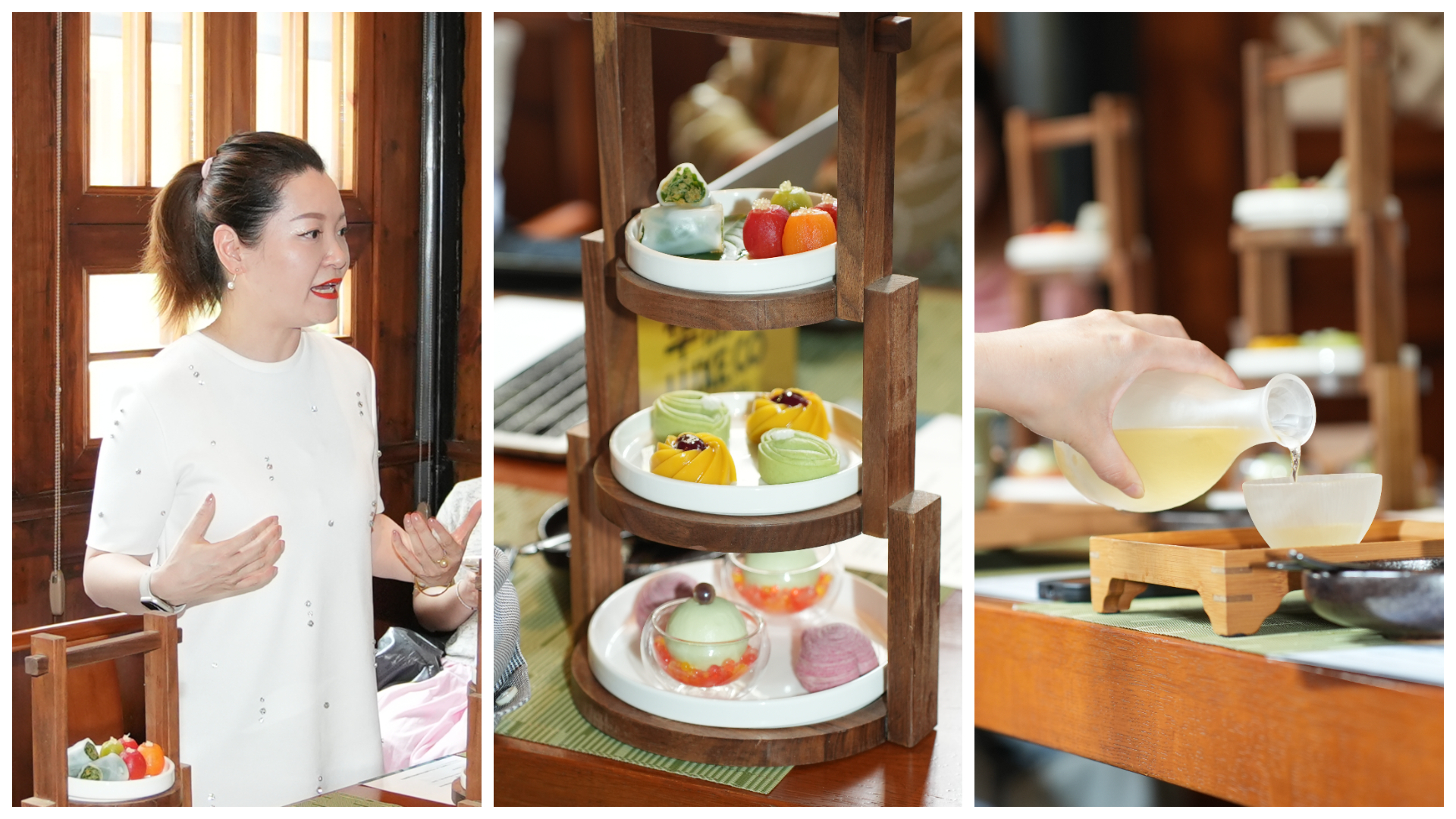
Above: TAN Yunzhu, Director of Sales & Marketing at The Temple House, delivering the welcome speech at the opening of the event.
About the Luxe.CO Silk Culture Division
In March 2025, Luxe.CO officially launched its Silk Culture Division, with a mission to promote Chinese silk heritage and help high-end industry professionals gain a deeper understanding of the richness and boundless potential of Chinese silk culture. The division aims to inspire dialogue and innovation in the revitalization and modernization of the silk industry.
In addition to producing original high-quality content, Luxe.CO will launch a series of curated cultural and industry initiatives, including source-tracing journeys, forums and workshops, art exhibitions, and more. Guided by first principles, the division seeks to uncover the origins of silk—from culture to commerce, from materials to craftsmanship, from history to the present, from China to the world—integrating the entire industry chain and exploring the essence of silk culture and craftsmanship from a new perspective.
Contact email for the Luxeplace Silk Culture Division: silk@luxe.co

